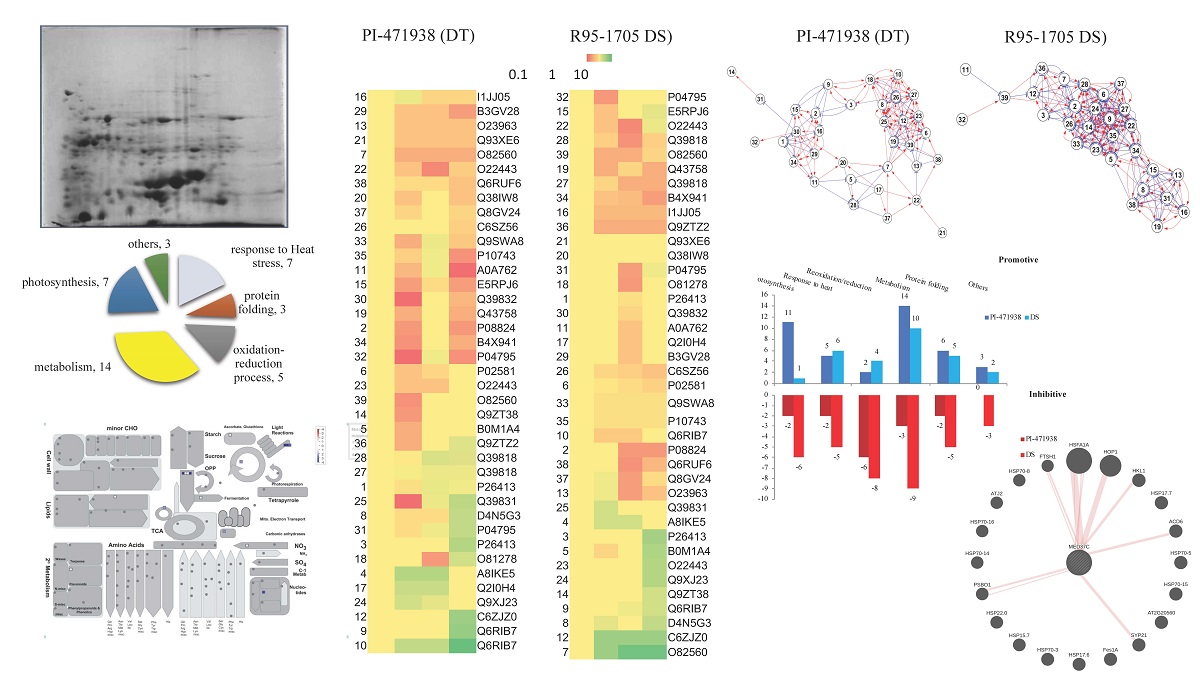Water stress (WS) and heat stress (HS) have a negative effect on soybean plant growth and crop productivity. During WS, soybean plants opt for survival through ion homeostasis and the conformations of proteins are disconcerted as plant cells lose water while HS leads to difficulties in flowering and fruiting. Some of these changes include oxidative stress leading to destruction of photosynthetic apparatus, macromolecules within cells and the onset of complex signaling cascades. Changes in the physiological characteristics, proteome, and certain metabolites were investigated on molecular and cellular functions, two soybean cultivars were exposed to different heat and water stress conditions independently and in combination. Leaf protein composition was studied using 2-DE and complemented with MALDI TOF mass spectrometry. Thirty-nine proteins were significantly altered in their relative abundance in response to WS, HS and combined WS+HS in both cultivars. Functional analysis revealed a majority of heat responsive-proteins were up regulated during HS and combined stress (WS+HS) while these proteins were down regulated to WS in tolerant cultivar with heat shock proteins generally down regulated to all levels of stress in DS cultivar. Protein MED37C, a probable mediator of RNA polymerase transcription II yielded potential protein interactors partners in Arabidopsis and our studies documents the significant impact of the protein in PI cultivar. Our study hypothesizes the plant’s development of cross-stress tolerance and will help foster the ongoing ventures in genetic modifications in stress tolerance.

